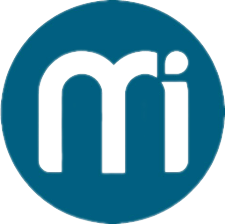Bapesta: The Iconic Streetwear Sneaker That Changed the Game

In the vast world of sneaker culture, few silhouettes have made as bold a statement as the Bapesta. Created by Japanese streetwear powerhouse A Bathing Ape (BAPE), the Bapesta sneaker has earned its place in the hall of fame of hype, culture, and controversy. Its vibrant colorways, unmistakable design, and rich cultural ties have kept it relevant for over two decades. But what exactly makes the Bapesta so special? Let's dive into the legacy, evolution, and influence of this iconic sneaker.
The Birth of Bapesta: A Bold Step in Streetwear
The Bapesta made its debut in the early 2000s, at a time when streetwear was just beginning to merge with luxury and high fashion. Designed by Nigo, the founder of BAPE, the Bapesta was a deliberate nod to the Nike Air Force 1. Its resemblance was no accident; in fact, it sparked debate among sneakerheads and legal experts alike.
However, Nigo wasn’t simply copying—he was recontextualizing. Much like how hip-hop samples older tracks to create something fresh, the Bapesta reimagined the Air Force 1 through the lens of Japanese street fashion. The design was flamboyant, with glossy patent leather uppers, bold colors, and the signature "STA" lightning bolt logo replacing the Nike Swoosh.
At a time when Japanese fashion was starting to influence global trends, the Bapesta quickly became a statement piece, worn by tastemakers and celebrities who wanted to stand out in a sea of sameness.
Design That Demands Attention
What sets the Bapesta apart visually is its audacity. While Nike’s Air Force 1 leaned into minimalism, the Bapesta embraced flash and flair. The sneaker’s most notable features include:
-
Patent leather in loud, often mismatched colors
-
The bold "STA" logo in place of the Swoosh
-
A star-and-lightning bolt motif
-
The “APE” head on the heel or tongue
These elements came together to create a sneaker that wasn’t afraid to be noticed. Whether you spotted a pair on the feet of Pharrell Williams in the early 2000s or saw a BAPE store display in Tokyo, the Bapesta was always about individuality.
Celebrity Co-Signs and Pop Culture Impact
Bapesta’s rise was accelerated by its celebrity co-signs, especially from artists like Pharrell, Kanye West, Lil Wayne, and the Neptunes. These weren’t just casual wearers—they actively incorporated the Bapesta into their personal branding. Pharrell even collaborated with BAPE through Billionaire Boys Club, his own fashion line co-created with Nigo.
In the early 2000s, when music videos were a major platform for trendsetting, Bapestas made frequent appearances. They became symbolic of a new kind of cultural cachet—not just stylish, but exclusive.
Today, as Y2K fashion makes a roaring comeback, younger generations are rediscovering these same icons. Social media influencers and fashion-forward artists are again rocking Bapestas, keeping the shoe in the spotlight two decades after its debut.
Collaborations That Fueled the Hype
BAPE has always been known for its limited-edition drops and strategic collaborations. Over the years, the Bapesta has been part of some highly sought-after collabs that have cemented its place in sneaker culture. Collaborations with brands and artists like:
-
Marvel Comics
-
KAWS
-
Kanye West (with the Dropout Bear Bapesta)
-
Comme des Garçons
-
Undefeated
-
Pepsi
Each release pushed the Bapesta into new territory, blending pop culture, fashion, and art. These limited drops not only sold out instantly but also fueled the resale market, with prices reaching into the thousands for rare pairs.
The Legal and Ethical Debate
The design of the Bapesta has often raised eyebrows due to its close resemblance to the Nike Air Force 1. While Nike did not initially take legal action, the similarity sparked discussions around intellectual property, homage vs. plagiarism, and the ethics of design appropriation.
Nigo’s approach was unapologetic. In interviews, he explained that streetwear was about cultural remixing—taking elements from different places and creating something new. In many ways, the Bapesta was a form of commentary on consumer culture, aligning with BAPE’s overall philosophy.
This debate added to the mystique of the Bapesta. Was it a knockoff, or was it genius reinterpretation? Depending on who you ask, the answer varies. But the controversy only added fuel to its cult status.
The Bapesta Today: Still a Streetwear Staple
In 2020, BAPE officially revamped the Bapesta silhouette, distancing it slightly from the Air Force 1 with subtle tweaks in shape and construction. This redesign was a response to growing scrutiny and also part of BAPE’s broader strategy to evolve with the times.
Today’s Bapestas still maintain the core aesthetics that fans love—glossy leather, bright colors, and bold logos—but with improved comfort, craftsmanship, and exclusivity. The brand also leans into sustainability conversations, hinting at more eco-conscious releases in the near future.
Collectors and sneakerheads alike are now revisiting the Bapesta not just for nostalgia but for its timeless street appeal. It’s not just a shoe—it’s a piece of fashion history.
Styling the Bapesta: From the Streets to the Runway
One of the most exciting aspects of the Bapesta is how versatile it can be. While originally rooted in streetwear, the Bapesta has crossed over into high fashion and runway looks.
You’ll see them paired with:
-
Oversized hoodies and cargo pants
-
Slim denim and vintage tees
-
Luxury streetwear pieces like Off-White or Fear of God
-
Monochrome fits that let the sneakers pop
Whether you're dressing for a concert or curating a fashion-forward Instagram post, the Bapesta lets you bring bold energy to any outfit. It's loud, proud, and unapologetically individual.
Why Sneakerheads Still Chase the Bapesta
In a market flooded with new sneaker drops every week, what makes the Bapesta still desirable? It’s the cultural depth. The Bapesta isn’t just a hype shoe—it’s a story of rebellion, remix, and redefining fashion norms.
Sneakerheads value heritage. The Bapesta carries the weight of a movement, a generation, and a philosophy. It’s for those who understand that fashion isn’t just about what you wear—it’s about what it says about you.
Final Thoughts: The Legacy of the Bapesta
More than 20 years after its debut, the Bapesta remains one of the most iconic sneakers in streetwear history. It reflects a time when Japanese street fashion exploded onto the global stage, when hip-hop embraced fashion as part of identity, and when sneakers became more than just footwear—they became art.
For collectors, fashion lovers, and newcomers alike, owning a pair of Bapestas is like owning a piece of cultural gold. Whether you're in it for the aesthetic or the history, one thing is certain: the Bapesta isn’t going anywhere.
- Art
- Causes
- Crafts
- Dance
- Drinks
- Film
- Fitness
- Food
- Games
- Gardening
- Health
- Home
- Literature
- Music
- Networking
- Other
- Party
- Religion
- Shopping
- Sports
- Theater
- Wellness


